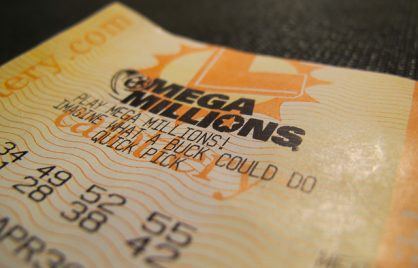R. Paul Wilson On: How To Be Your Own Casino (2/3)

This is the second in a three-part series on how to turn yourself into “the house” and reap the benefits of a mathematical edge in games that are less than fair but seemingly place the odds in the players’ (suckers’) favour.
I must re-iterate that these games are for entertainment purposes only and as always, while I encourage you to play for affordable stakes, it’s always good to share the secret when the game is over so your suckers can enjoy the same benefits with fresh fish on another day.
Here we will take the flip of a coin and turn it to our favour with some ingenious games that ultimately push the money in your direction.
The Fun Of Coin Flips
I’ve written elsewhere about the master of crooked coin flips AKA “The Flipper” and the many ways he would manipulate a coin toss or secretly know the outcome.
It’s also possible to buy (or have made) a “wobbler” – a coin that has been re-milled on the edge with a slight angle towards one side so that, when spun on a hard surface, it favours one side more than the other and, in many cases, the work is so heavy it’s almost impossible to force a losing spin!
Such gaffs can be fun, and the above variation was my preferred method for securing a free lunch by spinning a coin and asking someone to call heads or tails while still spinning.
The bet was for who would pay for lunch and if they called the winning side, I’d scoop up the coin and say, “I’m only kidding, I wouldn’t force you to pay for this!”
But if they called the losing side I’d let it fall!
What follows are games played entirely with fair coins and can be a great ongoing game or distraction between other gambling sessions and have been used as such by smart players and grifters for decades.
Coin Hustle #1 – Eight Coins Out
With eight pennies, propose a simple bet that once all are flipped, spun or tossed in a random fashion, you will pay two to one any time that the player throws four heads out of the eight coins.
A simple calculation makes four heads (or tails if preferred) the most common outcome of eight 50/50 flips but in fact the odds are absolutely in your favour, since you win if the result is one, two, three, five, six or eight heads (or tails)!
I prefer to do this in a cup or glass (a glass attracts attention and more suckers in the right scenario) and simply and fairly spread out the coins once upended onto the table without changing how they landed.
This is such a simple proposition that you can play this edge for hours both winning and losing but always being ahead.
And if you can’t find any takers for a two-to-one proposition like this, you’re probably not cut out for this kind of friendly swindle!
Coin Hustle #2 – Threesomes
The same proposition can be made with just three coins and again is based on encouraging a simple fallacy.
With just three coins, point out that there are only four possibilities when all three are flipped at random:
- Three heads.
- Three tails.
- One head and two tails.
- Two tails and one head.
Now state that if they fall all heads or all tails they win, and you will pay two to one on any reasonable bet but if the coins land with any other outcome they lose.
Personally, I prefer to randomise the coins in a glass or cup but the result is three individual 50/50 propositions. You may prefer to simply flip one coin three times, but the result is the same.
Think about this for a minute.
If there are only four outcomes, then you are essentially offering them two to one on a 50/50 situation and that’s madness.
But be warned that if they’re smart enough to think it over they will exit the logic trap you set up at the beginning and realise that there are actually six losing outcomes and only two winning possibilities since each of the three coins has a 50/50 outcome.
You lose when the coins land:
TAILS, TAILS, TAILS
or
HEADS, HEADS, HEADS
You win if the coins land:
HEADS, TAILS, TAILS
HEADS, HEADS, TAILS
HEADS, TAILS, HEADS
TAILS, HEADS, TAILS
TAILS, TAILS, HEADS
TAILS, HEADS, HEADS
Think of it as individual rolls and it makes sense but the beauty of rolling three coins at once is that this is harder to intuit and many people will be blinded by your two-to-one offer on a game that is actually three to one against the player.
Coin Hustle #3 – Penney’s Game
Finally, let me share a brilliant bit of mathematics that will guarantee a powerful edge almost by magic if you follow some simple rules.
As stated above there are eight possible outcomes when flipping three coins and each outcome should be as likely as the other.
But for this version, only one coin is flipped repeatedly until a chosen three-flip combination appears.
So, if the chosen combination is TAILS, TAILS, TAILS, a single coin is flipped until three tails have appeared in a row. So it might be flipped 10 times before this occurs in three consecutive flips.
Similarly with any selected possible outcome – such as TAILS, HEADS, HEADS or HEADS, TAILS, HEADS – you keep flipping coins and recording the outcome until three consecutive flips produces one of the wagered results.
I hope you got that.
It can be confusing, but just keep flipping and noting down the result until one of the wagered three-coin outcomes happens and whoever bet on that combination is the winner.
So where is the scam?
Walter Penney discovered that a simple calculation based on your opponent’s choice of three-coin combination will place the odds firmly in your favour in the worst case, and seven to one in your favour for the best case scenario!
The secret is to make sure they choose their three-coin combination first and then you state your three-coin combination based on their choice as follows.
Whatever combination they choose, consider it as A/B/C so if they nominate HEADS, HEADS, HEADS:
A = HEADS
B = HEADS
C = HEADS
If they pick TAILS, HEADS, TAILS, then:
A = TAILS
B = HEADS
C = TAILS
And so on.
Your nominated three-coins should be X/A/B where X = the opposite of B.
I know this sounds complicated so let’s look at a couple of quick examples.
For the two examples above X/A/B would be TAILS, HEADS, HEADS (if the sucker nominates HEADS, HEADS, HEADS) and TAILS, TAILS, HEADS (if the sucker wants TAILS, HEADS, TAILS).
So, another way of saying this is that you take their choice (A/B/C) remove C (their third flip option) and simply add the opposite of B (their second flip option) to the beginning of your three-coin combination.
This means that X/A/B for their choice of HEADS, TAILS, TAILS would be HEADS, HEADS, TAILS.
Play with this for while with all the combinations mentioned in the previous coin flip game above (Threesomes) until you can quickly calculate X/A/B for all outcomes, then flip a coin to see how often your three-coin combo will win against theirs.
Sure, it sounds complicated but all advantages in gambling require a little extra work and understanding and if you can decipher these instructions, you have a powerful winning strategy for a seemingly simple game.
For more similar content, check out the first part of this series on dice hustles.


